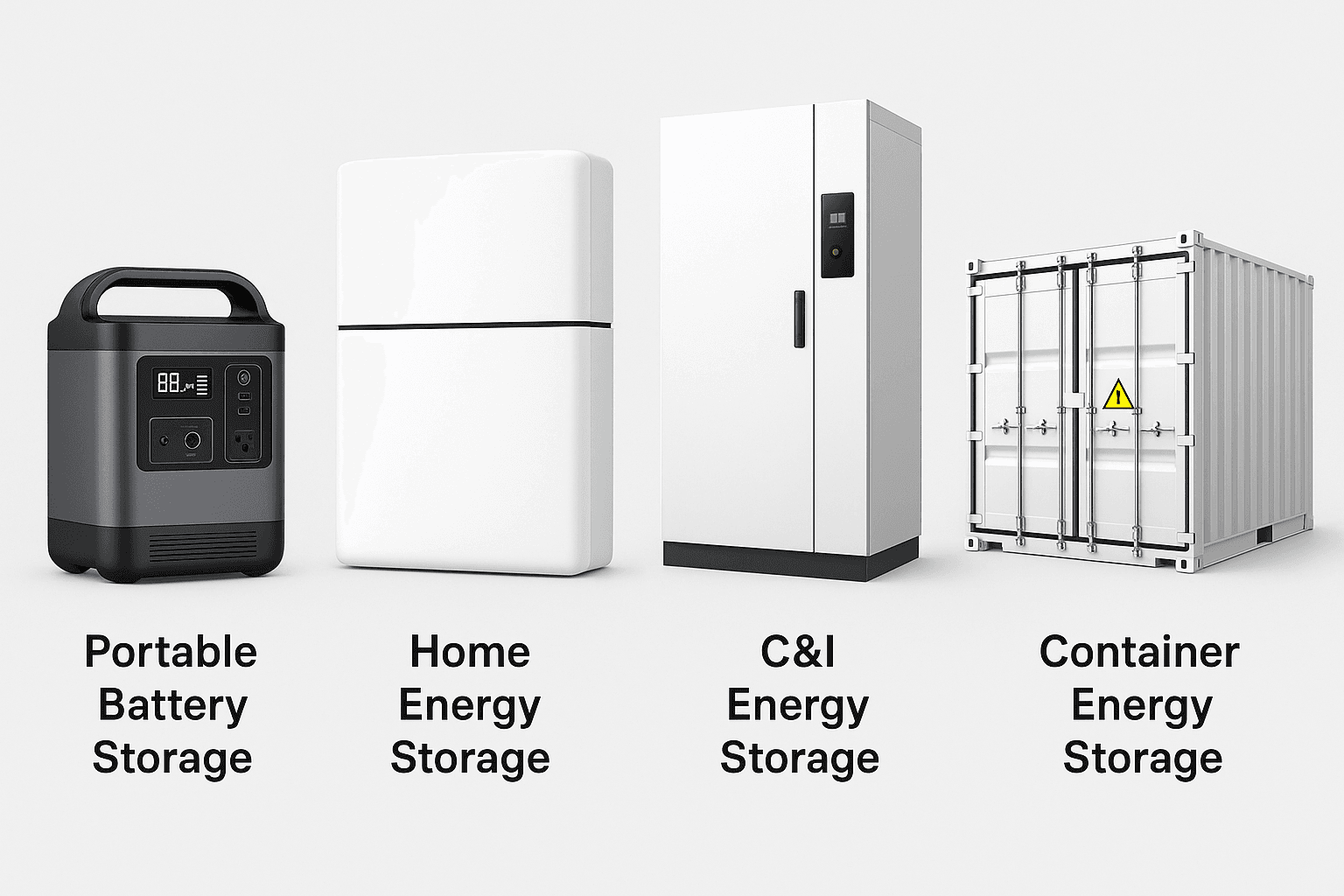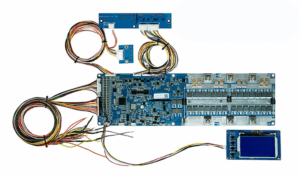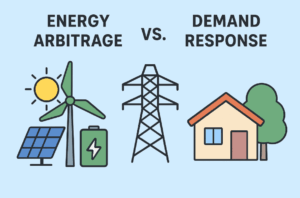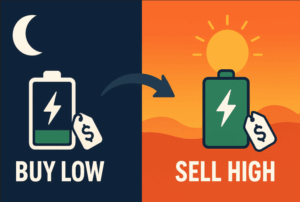- You have no items in your shopping cart
- Subtotal: $0.00

BESS (Battery Energy Storage System) Introduction: The way we produce, store, and consume energy is changing fast. Renewable energy is rising, but it comes with one major challenge: it does not always produce power when we need it most. Solar panels generate during the day, and wind turbines depend on weather conditions. This creates an imbalance between supply and demand.
This is where Battery Energy Storage Systems (BESS) step in. By storing excess electricity and releasing it when required, BESS provides the flexibility modern grids and businesses need. It ensures stable supply, reduces energy costs, and accelerates the clean energy transition.
What is BESS?
A Battery Energy Storage System (BESS) is a technology that captures electrical energy and stores it for later use. Unlike traditional energy storage, which often relied on pumped hydro or thermal storage, BESS is compact, scalable, and highly efficient.
For example, a commercial building can install a BESS to reduce electricity bills by charging during off-peak hours and discharging during expensive peak periods. This flexibility is why governments and industries worldwide are investing in Battery Energy Storage Systems solutions.
How Does BESS Work?
At its simplest, a BESS works like a giant rechargeable battery. It captures electricity when demand is low or renewable generation is high, and then it releases that stored power when demand peaks.
The process can be broken down into three main steps:
- Charging Phase – Batteries absorb electricity from renewable sources or the grid.
- Storage Phase – Energy stays stored in cells with very low losses.
- Discharging Phase – BESS provides electricity back to the grid, facility, or home.
Because Battery Energy Storage Systems can respond within milliseconds, it plays an essential role in grid stability. For instance, when a sudden power outage occurs, a Battery Energy Storage System can supply backup energy instantly while other systems take time to restart.
Key Components of BESS
Every reliable BESS is built on several crucial components:
- Battery Modules – The storage units, often lithium-ion, though new chemistries are emerging.
- Battery Management System (BMS) – Protects batteries from overheating, overcharging, or deep discharge.
- Power Conversion System (PCS) – Converts DC electricity from batteries into AC for grid or facility use.
- Thermal Management System – Keeps batteries at optimal operating temperature to extend life and ensure safety.
- Energy Management Software – Intelligent systems that forecast demand, optimize charging, and provide remote monitoring.
When integrated properly, these components ensure safe, efficient, and long-lasting performance.
Benefits of BESS
The advantages of adopting BESS extend across cost, reliability, and sustainability:
- Lower Costs – Businesses reduce peak demand charges and optimize energy bills.
- Grid Resilience – Provides backup power during outages or natural disasters.
- Sustainability – Supports renewable energy by storing excess solar and wind power.
- Revenue Opportunities – Utilities and businesses can sell stored energy back to the grid or participate in demand response markets.
- Operational Flexibility – Systems can be expanded as energy needs grow.
For example, a hospital with Battery Energy Storage System can maintain critical operations during a blackout, while also lowering daily electricity costs.
Real-World Applications of BESS
1. Commercial and Industrial (C&I)
Large factories, shopping centers, and data centers use Battery Energy Storage System to reduce energy bills, improve uptime, and ensure operational continuity.
2. Utilities and Grid Services
BESS helps stabilize voltage, regulate frequency, and balance renewable energy integration. For instance, grid operators use large Battery Energy Storage Systems installations to manage sudden demand spikes.
3. Residential Homes
Homeowners with solar panels often pair them with BESS to achieve energy independence. This allows them to store daytime solar production for use at night.
4. Electric Vehicles (EVs) and Charging
5. Renewable Energy Projects
Wind farms and solar parks use BESS to store excess energy and deliver consistent supply even when weather conditions change.

Challenges Facing BESS
Although promising, Battery Energy Storage Systems still faces hurdles:
- High Capital Cost – Initial installation requires significant investment, though costs are dropping.
- Battery Lifespan – Performance degrades over time, requiring careful management and eventual replacement.
- Safety Risks – Thermal runaway can lead to overheating or fire if systems are not well designed.
- Policy and Regulation – Incentives and regulations vary widely, creating uncertainty for investors.
Industry players are working to address these issues through innovation, recycling strategies, and stricter safety standards.
The Role of BESS in Energy Transition
BESS is central to the world’s clean energy future. Governments are setting ambitious carbon reduction goals, and storage is vital to achieving them.
Future trends include:
- Advanced Chemistries – Solid-state, sodium-ion, and other emerging batteries will improve energy density and lifespan.
- Artificial Intelligence – Smarter energy management systems will predict demand and optimize storage automatically.
- Decentralized Energy – Battery Energy Storage Systems will anchor microgrids and virtual power plants, making communities more resilient.
- Battery Recycling – Circular economy models will reduce waste and cut costs.
For example, Germany and California are leading with large-scale Battery Energy Storage Systems deployments that enable higher renewable penetration while keeping the grid stable.
Case Studies: BESS in Action
South Australia’s Hornsdale Power Reserve
Known as the world’s largest lithium-ion battery project, Hornsdale stabilizes the grid, reduces blackouts, and saves millions in operating costs each year.
Tesla Powerwall for Homes
Thousands of households use the Powerwall to store solar energy, cut energy bills, and achieve independence from traditional utilities.
Industrial BESS in India
Factories in India deploy BESS to offset unreliable grid power and avoid production downtime during outages. This strengthens both productivity and cost control.
These examples highlight how flexible and impactful Battery Energy Storage Systems can be across regions and industries.
Conclusion
Battery Energy Storage Systems are more than just technology—they are a game-changer for the future of energy. From reducing costs and stabilizing grids to accelerating renewable adoption, BESS is shaping how the world consumes and manages power.
Whether for homes, businesses, or entire nations, Battery Energy Storage Systems provides the resilience, efficiency, and sustainability required in the modern era. As innovations continue to drive down costs and improve performance, Battery Energy Storage Systems will become an essential foundation of the clean energy transition.
The future of energy is smart, sustainable, and stored—and BESS is leading that transformation.




[…] Decarbonization is no longer just a buzzword — it’s a global imperative. As climate change intensifies, the need to cut greenhouse gas emissions has never been clearer. One of the most effective strategies for reducing carbon emissions is the widespread adoption of cleaner energy technologies. Among these, Battery Energy Storage Systems (BESS) play a pivotal role by enabling greater integration of renewab… […]
[…] BESS begins with a single, unassuming building block: the lithium-ion cell. While it may be small, a […]
[…] In today’s Battery Energy Storage System (BESS) landscape, a reliable Battery Management System (B… Among the latest innovations, the Seplos BMS 3.0 stands out as a powerful, next-generation solution built for commercial and industrial energy storage systems (C&I BESS), renewable energy applications, and advanced lithium battery packs. […]